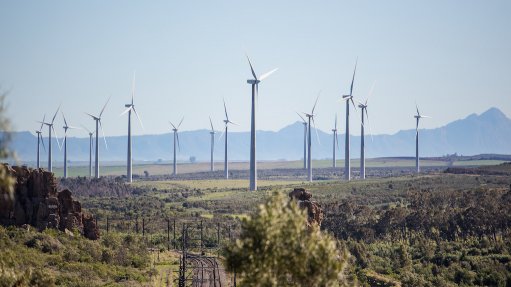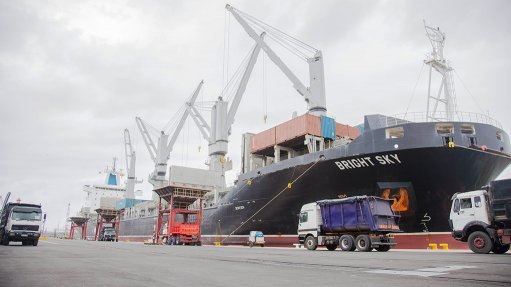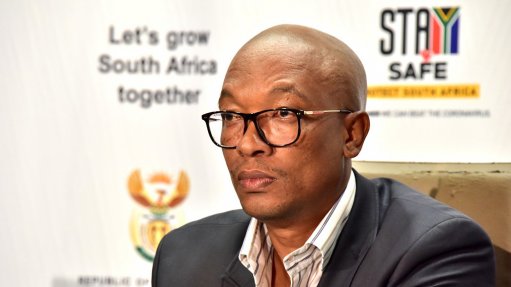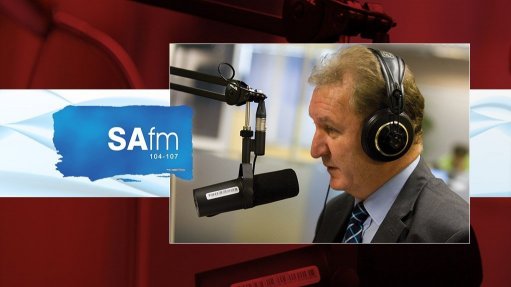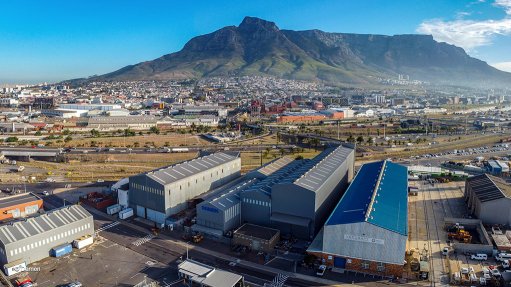Big shortfall in climate adaptation funding undermines Africa’s ability to respond


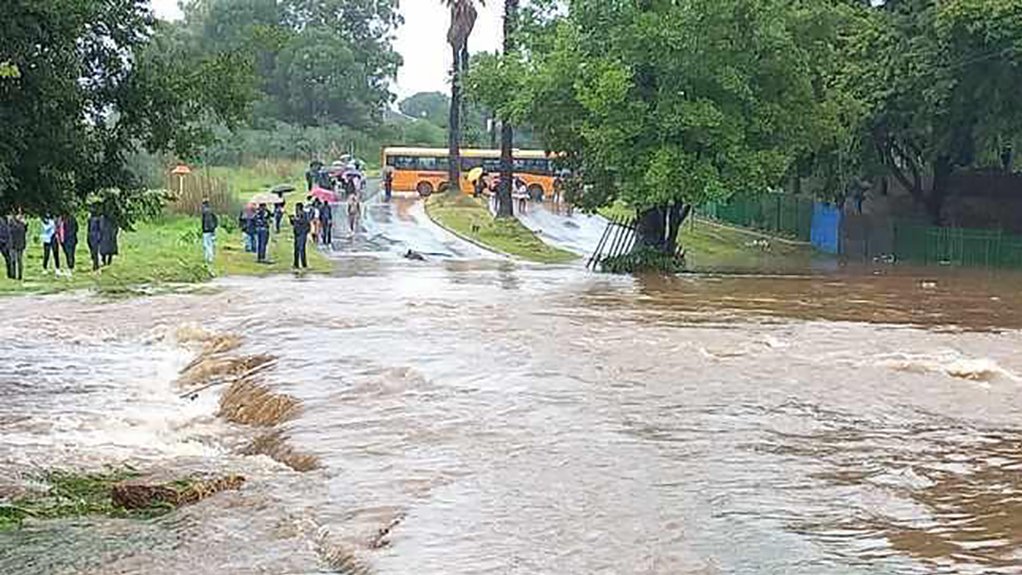
DISASTER RESPONSE The frequency of extreme weather events and climate change-related disasters requires a more coordinated response from African governments and civil society
The effects of climate change are becoming increasingly evident and yet a key component of the fight to preserve lives and livelihoods, namely adaptation funding, has stagnated, according to attendees of last month’s Africa Climate Roundtable.
The event – hosted by African Risk Capacity (ARC), alongside various climate- and development-focused organisations, including the Africa Adaptation Initiative, the World Food Programme, the African Union Development Agency-NEPAD (AUDA-NEPAD), the Global Green Growth Institute (GGGI), the African Capacity Building Foundation, the Arab Bank for Economic Development in Africa, the United Nations Human Settlements Programme, the African Export-Import Bank, and the African Guarantee Fund – took place mere days after the Kenyan government ordered evacuations for at-risk citizens, following weeks of heavy rainfall and flooding.
It highlighted that efforts to address the effects of climate change fall into two categories: adaptation and mitigation. Moreover, while attracting funding for both has proved surprisingly challenging, adaptation funding in particular is on the decline.
“What we know is aid in itself has drastically reduced. What we also know is that, between 2020 and 2021, adaptation finance had reduced by 20% . . . In addition, globally, there has been a reduction of climate finance to the continent . . . so, there is generally a problem of quality flow of climate finance to the continent,” economist and former Botswana Trade and Industry Minister Bogolo Joy Kenewendo told attendees.
AUDA-NEPAD Planning and Coordinating Agency programme implementation and coordination director Estherine Lisinge-Fotabong added that “Africa has found itself at the periphery of climate finance . . . alarmingly, only 12% of the total [yearly] climate finance is directed at Africa”.
Their observations were echoed by United Nations deputy secretary-general Amina Mohammed, who noted that despite its relatively small carbon footprint, the continent will “bear the brunt of climate impacts and barriers to sustainable development”, adding that Africa’s capacity to address these challenges is “hobbled” by a lack of access to long-term, affordable finance.
“The continent needs an additional $70- billion each year, between now and 2030, to meet its adaptation and resilience- building needs, and around $194-billion each year to accelerate action towards the Sustainable Development Goals (SDGs). Without it, the future of the world’s most youthful population and economy will be on the line.”
The seriousness of the shortfall was stressed by Global Centre for Adaptation CEO Dr Patrick Verkooijen, who pointed out that, at the current level of financing, the continent will only be able to mobilise $195-billion for adaptation by 2035, less than half of the $420-billion required, and a pittance compared with the close to $2- trillion required to implement and action the continent’s Nationally Determined Contributions (NDCs), according to Kenewendo.
However, the reduction in climate finance is not happening in isolation, as geopolitical developments and constrained growth likely shifted many countries’ funding priorities. Climate finance is not the only sector under pressure.
“On the humanitarian side . . . we’re almost halfway through the year, and only 10% of the funding has been received. So, we’re having a funding crash internationally on all sectors. And we really need to talk about how to address that,” United Nations Assistant Secretary-General Climate Crisis Coordinator for the El Niño Response Reena Ghelani commented.
Promises, Debt and Access
One of the issues repeatedly mentioned was the fact that, despite environmental law elevating the “polluter-pays principle” into the collective consciousness, adherence to that concept seemingly becomes less urgent when climate change adaptation and mitigation are being discussed.
“Sadly, we had a couple of pledges a few years ago, about $100-billion [a year], which were not reached. We had [about] $20- billion in total that made it to the continent between 2015 and 2020, which was way below what was expected,” Kenewendo said.
She was referring to the collective goal by developed countries to mobilise $100-billion a year by 2020 for climate action in developing countries. The commitment was made at the fifteenth Conference of the Parties (COP15) to the United Nations Framework Convention on Climate Change (UNFCCC) in 2009, formalised at COP16 and reiterated and extended to 2025 at COP21.
According to the Organisation for Economic Cooperation and Development’s 2024 analysis on trends of climate finance mobilised by developed countries for developing countries, developed countries only met (and exceeded) the $100-billion target in 2022.
“We are being promised that the billions that [have been committed] are now available . . . But the problem that we have now is the form of that funding,” noted Namibia’s Department of Environmental Affairs multilateral environmental agreements deputy director Petrus Muteyauli.
“As Africans, we need to ask ourselves: Do we really have to take out loans for adaptation?”
He added that Article 4 of the UNFCCC and Article 9 of the Paris Agreement were “quite clear” that the provision of climate finance had to be done within the parameters of the ‘polluter-pays principle’.
Muteyauli said that, while loans might be necessary for some projects, he did not believe they were necessary for all adaptation projects.
Kenewendo added that “the continent collectively has a debt of $1.8-trillion. A lot of African countries at the moment are facing a challenge [where their] debt repayment is higher than what they allot to education or . . . healthcare. Therefore, asking them to also allot something to sustainability is a challenge.”
Alongside issues relating to debt, there are also challenges related to access.
In a breakaway session moderated by GGGI Africa regional director Dr Malle Fofana and Africa Adaptation Initiative special adviser Kulthoum Omari Motsumi, it was noted that often it is a struggle, for small, medium- sized and microenterprises, for example, to gain access to the appropriate entity or country representative to attempt to lodge an application for climate finance.
Further, even when directing the proposal to the correct person or entity, the proposal would often contain insufficient data, or the process would be protracted.
Kenewendo cited a community project in Kenya that applied for funding five years ago, which, to her knowledge, had yet to receive a response from the adaptation fund. “So, it’s clear that the funds are inefficient.”
She added, however, that last year, during COP27, there were fruitful discussions about creating efficiencies in the application processes, particularly with the UNFCCC-related funds.
“But there is also the quality of the finance. And the direction of flow is also quite important, because one would assume that the finance goes where it is needed most. Or that the majority of it goes where it’s needed most. But what we found is that the majority of it ends up going to consultants . . . mostly because the process is so cumbersome and, in the end, the communities end up getting crumbs.”
Motsumi then cited her organisation’s establishment of the Adaptation Project Incubator for Africa. The idea is to prepare projects for implementation, with an emphasis on building capacity for direct access entities in the hope that more of the existing and untapped adaptation resources can be allocated.
She also noted that despite the indebtedness of many African countries, governments could still do more, adding that African governments were only allocating between 5% and 7% of their budgets to adaptation measures.
She and Fofana agreed that African governments should look to increase public-private partnerships, introduce innovative measures and taxation to increase domestic funding, and leverage multilateral and cross-border partnerships, because foreign aid and “grants” were evidently on the decline.
Positive Developments
In addition to the establishment of the Adaptation Project Incubator and the willingness to simplify and streamline application processes, another positive recent development is the ongoing effort to operationalise the ‘Loss and Damage’ fund. The fund was introduced at COP27 last year and will establish funding arrangements for developing countries “particularly vulnerable to the adverse effects of climate change”.
World Bank Group executive director Abdoul Salam Bello explained that the bank is working “diligently within the framework” to operationalise the fund, and that it continues to underscore the importance of direct access to the fund through Finance Ministries, adding that new and existing funds should learn from the challenges of climate finance access.
“However, we insist on clear modalities with respect to directly accessing the fund especially given the ‘emergency’ link to climate loss and damage. Our motto [for this initiative] is speed, scale and impact, and being mindful of the timing, the process is expected to be finalised in August.”
Further, Bello pointed to the opportunity for the ARC to work with the World Bank and other development finance institutions to put the emphasis on adaptation resilience, especially in the low-income countries that are vulnerable to climate-related events.
He also cited the “huge need” for building frameworks and processes to address natural disasters, a call echoed by Ghelani.
“I’ve had the honour of travelling around Southern and East Africa in my current role. So, there are several priorities that are emerging from discussions with governments and communities. One of them is early warning. But it’s not just early warning, it’s the whole spectrum of disaster management, which includes early warning, preparedness and early action.”
She added that this required a “real commitment” to implementing these systems.
“We know that if we have early warning, we will save lives eightfold, we will reduce damage loss by 30%, at least. And similarly, if we invest in preparedness, and resilience, we know that $1 will save us $10.”
She also cited the Nairobi Declaration and the need for governments and communities to continue to lead the vision on climate change strategies. This includes jointly addressing development and climate ambitions, and establishing policies, governance and regulatory frameworks that are able to guide and attract investment.
ARC chairperson Dr Mothae Anthony Marupeng commented that Africans needed to have the courage to try new methods and that preparedness, collaborative action and coordinated and concerted effort were imperative to the realisation of the NDCs. He hoped that roundtable events like it would facilitate discussions and outcomes that would help move the needle in terms of meeting Africa’s climate change needs.
Comments
Announcements
What's On
Subscribe to improve your user experience...
Option 1 (equivalent of R125 a month):
Receive a weekly copy of Creamer Media's Engineering News & Mining Weekly magazine
(print copy for those in South Africa and e-magazine for those outside of South Africa)
Receive daily email newsletters
Access to full search results
Access archive of magazine back copies
Access to Projects in Progress
Access to ONE Research Report of your choice in PDF format
Option 2 (equivalent of R375 a month):
All benefits from Option 1
PLUS
Access to Creamer Media's Research Channel Africa for ALL Research Reports, in PDF format, on various industrial and mining sectors
including Electricity; Water; Energy Transition; Hydrogen; Roads, Rail and Ports; Coal; Gold; Platinum; Battery Metals; etc.
Already a subscriber?
Forgotten your password?
Receive weekly copy of Creamer Media's Engineering News & Mining Weekly magazine (print copy for those in South Africa and e-magazine for those outside of South Africa)
➕
Recieve daily email newsletters
➕
Access to full search results
➕
Access archive of magazine back copies
➕
Access to Projects in Progress
➕
Access to ONE Research Report of your choice in PDF format
RESEARCH CHANNEL AFRICA
R4500 (equivalent of R375 a month)
SUBSCRIBEAll benefits from Option 1
➕
Access to Creamer Media's Research Channel Africa for ALL Research Reports on various industrial and mining sectors, in PDF format, including on:
Electricity
➕
Water
➕
Energy Transition
➕
Hydrogen
➕
Roads, Rail and Ports
➕
Coal
➕
Gold
➕
Platinum
➕
Battery Metals
➕
etc.
Receive all benefits from Option 1 or Option 2 delivered to numerous people at your company
➕
Multiple User names and Passwords for simultaneous log-ins
➕
Intranet integration access to all in your organisation








